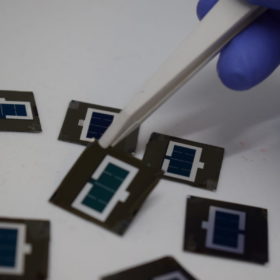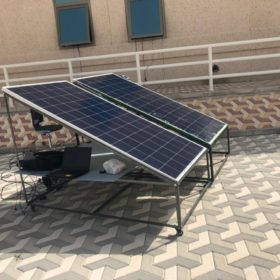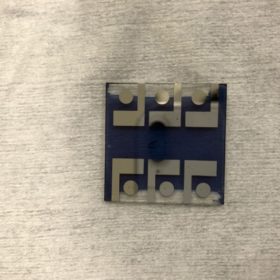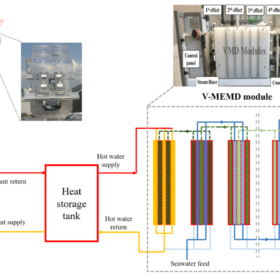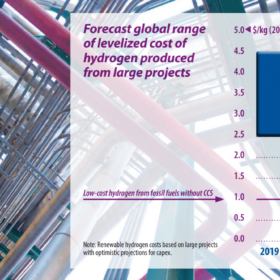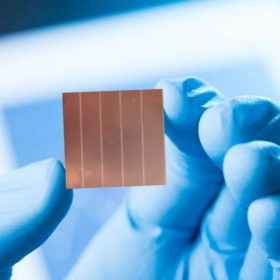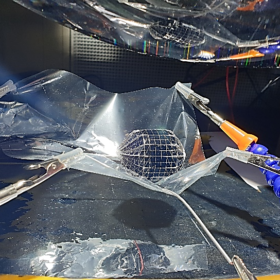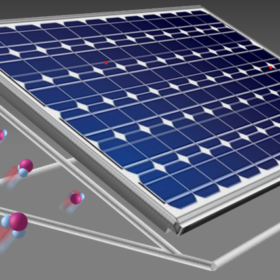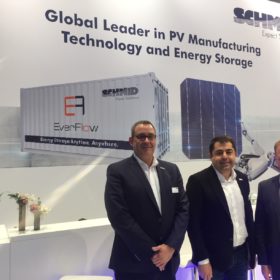n-type perovskite tandem cell hits 27% efficiency
Scientists demonstrated a perovskite-silicon tandem cell that reached 27% conversion efficiency. Though higher tandem cell efficiencies have been achieved, this represents a big jump in efficiency for those utilising n-i-p architecture, which previously had not surpassed 22%.
Solar module cooling techniques for harsh climates
Saudi scientists have tested several cooling technologies for solar panels and have found that active techniques work better than passive ones under harsh climatic conditions. The most effective one consists of a system based on four heat pipes immersed in a box of liquid, as liquid bulk, integrated with the back of the solar panel.
Organic solar cell with 18.4% efficiency via new electrode coating
Saudi scientists built the cell’s electrode with a hole-transporting molecule called Br-2PACz and not with the commonly used PEDOT:PSS. It helped improve the photovoltaic cell efficiency by around 0.9%.
Rooftop CPV-thermal tech to produce electricity and freshwater
It’s claimed the decentralised desalination system can deliver a levelised cost for desalinated water of US$0.7-4.3/m3, depending on PV costs and electricity prices. It was built with several concentrated photovoltaic/thermal (CPV-T) collectors, a hot water tank, a V-MEMD module, a seawater feed tank, and a distillate tank.
Saturday read: More than just a pipe dream
When coupled to gigawatt-scale solar and wind generation, green hydrogen could be the clean fuel to unlock hard-to-electrify sectors of the economy. But first it must be transported cost-effectively to where it’s needed.
Perovskite solar cell with cesium-titanium dioxide nanotubes
A global research group has developed a perovskite PV cell with titanium dioxide nanotubes doped with cesium. It purportedly offers better short-circuit current and power conversion efficiency than cells without cesium nanoparticles. They say it has optimal thermal stability under temperatures up to 800 C.
The weekend read: The race for green hydrogen
Large swaths of low-cost land: check. Lots of sun and wind: check. The ability to transport green hydrogen cost-effectively to energy importing economies: check. Then you’re in the race to become one of the “renewable energy superpowers” of the low-carbon economy. A growing number of countries are assessing their renewable resources and natural attributes and positioning themselves to become green hydrogen exporters. However, not all are created equal.
Spherical monocrystalline solar cells with 18.93% efficiency
The spherical 3D cells can reportedly generate around 101% more power than conventional flat solar cells. Measurements have also shown that the spherical cells provide a 10% lower maximum temperature compared to flat cells, while accumulating less dust.
Saudi researchers propose harvesting atmospheric water to cool down PV panels
Scientists from Saudi Arabia have proposed a new PV panel cooling technique which employs an atmospheric water harvester. The device uses waste heat from the PV panel to collect atmospheric water at night and then releases it during the day to cool down the module. The researchers claim the device may also be improved to produce liquid water, which could be used for the cleaning of the modules.
3 GWh of German redox flow battery production: Made in Saudi Arabia
German production equipment provider Schmid and Saudi chemical group Sabic are planning to begin activities at a new factory in Saudi Arabia, with production being expected to begin in 2021.
